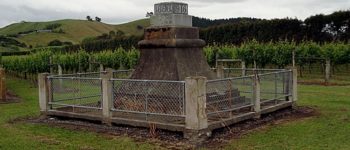1866: Battle of Omarunui
October 11, 2019
By AHNZ
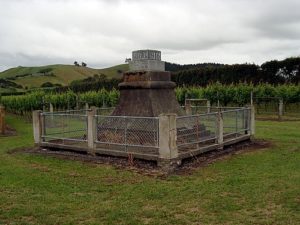 Today in New Zealand history, 12 October, 1866, a little-discussed chapter was written in the Maori Wars. The Battle of Omarunui put down an uprising of the fanatical Hauhau death cult, also known as Pai Marire. As frequently happens when a great guru dies, the cult fractured into competing sects upon the death of Te Ua in late 1866. For example, Te Witi at Parehika, and Titokowaru at Te Ngutu O Te Manu. Te Ua’s cult had spread to the east coast of the North Island, and the Ngati Hinuru tribe, by 1865.
Today in New Zealand history, 12 October, 1866, a little-discussed chapter was written in the Maori Wars. The Battle of Omarunui put down an uprising of the fanatical Hauhau death cult, also known as Pai Marire. As frequently happens when a great guru dies, the cult fractured into competing sects upon the death of Te Ua in late 1866. For example, Te Witi at Parehika, and Titokowaru at Te Ngutu O Te Manu. Te Ua’s cult had spread to the east coast of the North Island, and the Ngati Hinuru tribe, by 1865.
“At the beginning of October 1866, the Ngati-Hineuru Tribe, a small but war-loving clan whose principal villages were Te Haroto and Tarawera on the present Napier-Taupo Main Road set out for the East Coast with the intention of delivering an attack on the Town of Napier.”- Cowan (1922)
The Ngati Hinuru had their warlord in Chief Te Rangihiroa and their witchdoctor in Panapa. They were not to be as successful, and certainly not as long-lasting, as their brethren at Parihaka and Te Ngutu. However, they were certainly the most ambitious in setting out to conquer Napier Town.
Omarunui Occupation
Maori New Zealanders were the first victims as the Hauhaus set out on their war party. The peaceful village of Omarunui was over-run by its crazed kinfolk and occupied. The inhabitants were evacuated to safety by their chief, Paora Kaiwhata, to raise the alarm with their Settler New Zealander friends. Together the Settlers and the Maoris would save Napier, reclaim Omarunui, and defeat the Hauhaus in a single day.
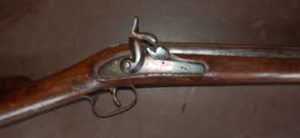 Chief Te Rangihiroa, the ‘fiery old warrior’, led a party of 25 mounted raiders to attack Napier from the north (Petane.) This night raid was supposed to provoke the un-ready New Zealanders into facing the wrong way. Then, guru Panapa and the Omarunui war party would strike out of the inland to crush Napier from the east.
Chief Te Rangihiroa, the ‘fiery old warrior’, led a party of 25 mounted raiders to attack Napier from the north (Petane.) This night raid was supposed to provoke the un-ready New Zealanders into facing the wrong way. Then, guru Panapa and the Omarunui war party would strike out of the inland to crush Napier from the east.
The cultists had a sound plan but it relied upon the enemy being ignorant and unready when they were neither.
The Petane Ambush
The Hauhau’s plan crumbled as Rangihiroa’s mounted raiders met their match. The sting force never got to wipe out any outlying settler families or sack Napier. Instead, they were ambushed at Petane by Hawke’s Bay Military Setters.
Beaten at their own game, Chief Rangihiroa and most of his force opted for suicide-by-cop. Three survivors became prisoners on the Chatham Islands.
“In mid-morning movement was spotted 800 m up the valley. An ambush was hastily prepared around a clearing just below a small gorge. The Ngāti Hineuru party was taken by surprise, and in the firing that followed an initial call for surrender, 12 – including Te Rangihiroa – were killed and one wounded. The only European casualty was Sergeant James Fletcher, who was shot in the knee.”- nzhistory.govt
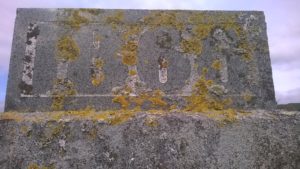 The scene of the decisive Petane ambush was marked in 1916 by what is now a crumbling monument. It is uncared for, vandalised, but mostly ignored. By stumbling upon it in 2018 I was led to discover this bit of New Zealand history. The similar monument at Omarunui (image top of post) is in about the same condition. It is barely possible even to read the year 1866 under all the lichen.
The scene of the decisive Petane ambush was marked in 1916 by what is now a crumbling monument. It is uncared for, vandalised, but mostly ignored. By stumbling upon it in 2018 I was led to discover this bit of New Zealand history. The similar monument at Omarunui (image top of post) is in about the same condition. It is barely possible even to read the year 1866 under all the lichen.
Omarunui Siege
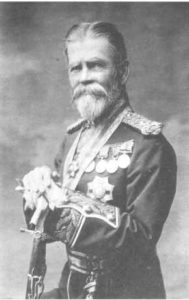 Meanwhile, back at occupied Omarunui, guru Panapa and his 100+ warriors were being undone. Colonel George Whitmore (image left) had led New Zealand Settlers and Maori forces through the night and had the place surrounded by dawn on 12 October 1866. Honour Culture’s tactics had been check mated by Dignity Culture’s intelligence and strategy.
Meanwhile, back at occupied Omarunui, guru Panapa and his 100+ warriors were being undone. Colonel George Whitmore (image left) had led New Zealand Settlers and Maori forces through the night and had the place surrounded by dawn on 12 October 1866. Honour Culture’s tactics had been check mated by Dignity Culture’s intelligence and strategy.
 Like his warrior chief, Panapa refused to surrender. Josiah Hamlin (right) bravely entered Omarunui under a white flag to make the offer but was rebuked. It’s worth mentioning because this was a damn brave thing to do under the circumstances. Honour Culture Maoris pride themselves on stabbing foes in the front, not in the back, but would you bet your life? Being a top public servant in 1866 certainly involved more than spinning to the media rigging buy elections as it does these days! Hamlin came back in one piece and after an hour’s grace the bombardment of Omarunui began.
Like his warrior chief, Panapa refused to surrender. Josiah Hamlin (right) bravely entered Omarunui under a white flag to make the offer but was rebuked. It’s worth mentioning because this was a damn brave thing to do under the circumstances. Honour Culture Maoris pride themselves on stabbing foes in the front, not in the back, but would you bet your life? Being a top public servant in 1866 certainly involved more than spinning to the media rigging buy elections as it does these days! Hamlin came back in one piece and after an hour’s grace the bombardment of Omarunui began.
“Just after midnight on 12 October, 200 European militia marched out of Napier under the command of Colonel George Whitmore. They were joined by 200 Ngāti Kahungunu whose leaders included Kaiwhata, Tareha, and Rēnata Kawepō.”
“By daybreak Ōmarunui was nearly surrounded. When Panapa rejected an invitation to surrender, Whitmore ordered heavy fire to be concentrated on the kaingā’s meagre defences from three sides.”- nzhistory.govt
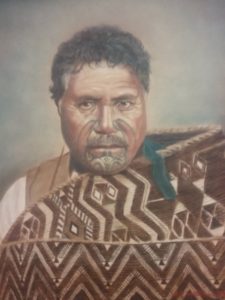 Panapa and his defenders were waiting for something that was never going to happen. Chief Rangihiroa’s diversionary raids to draw the enemy away from Omarunui never got off the ground; Ambushed, as we saw above.
Panapa and his defenders were waiting for something that was never going to happen. Chief Rangihiroa’s diversionary raids to draw the enemy away from Omarunui never got off the ground; Ambushed, as we saw above.
In the bombardment (and the mopping up to follow) the cultists were killed or captured. Panapa the priest and Rangihiroa the warlord were both killed within hours of each other. Others, like the burly warrior chief Rangi Tahau (left,) were carted off to join Te Kooti at the Chatham Islands in chains.
“Two Europeans – one of them Private W. Young – were killed and nine wounded. Two Ngāti Kahungunu were killed and four wounded. It is thought that 23 Ngāti Hineuru dead were buried in the pā, while another 30 or so were wounded.”- ibid
 This battle of the East Coast War certainly averted what could have been horror untold. Not just Napier was at risk because victory for this Kiwi Al-Qaeda would have encouraged others of their violent brethren to hatch out. It’s a thrilling story actually that neither I nor the 1916 commemorative stones do justice (especially when they’ve been neglected and vandalised.)
This battle of the East Coast War certainly averted what could have been horror untold. Not just Napier was at risk because victory for this Kiwi Al-Qaeda would have encouraged others of their violent brethren to hatch out. It’s a thrilling story actually that neither I nor the 1916 commemorative stones do justice (especially when they’ve been neglected and vandalised.)
Omarunui is also part of the back-story for the most dramatic and successful jail break in New Zealand history: Te Kooti’s Con Air by Sea. Defeated veterans of Omarunui would become Te Kooti’s best and most loyal Con Air compatriots.
—
Image ref. AHNZ Files (2018)
Ref. The New Zealand Wars: A History of the Maori Campaigns and the Pioneering Period; James Cowan (1922)
Image ref. Ōmarunui NZ Wars memorial; NZHistory.govt
Ref. Pētane NZ Wars memorial; NZHistory.govt
Image ref. Major General Sir George Stoddart Whitmore; diggerhistory
Image ref. Hamlin; geni.com
Image ref. Te Rangi Tahau; geni.com
 Like Comment Share
Like Comment Share


